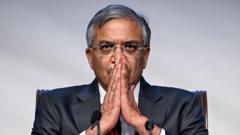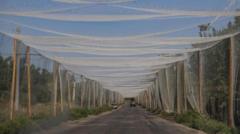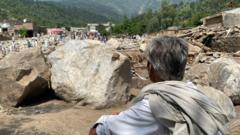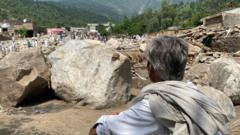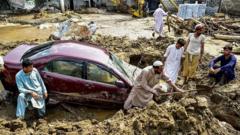In the wake of a horrific militant attack in Pahalgam, Indian-administered Kashmir, there’s a mix of hope and anxiety as the tourist destination grapples with a slow return of visitors. The attack, which occurred last Tuesday, claimed the lives of 26 individuals, predominantly tourists, and dramatically impacted both the local economy and the ongoing India-Pakistan conflict in the region.
**Resilience Amidst Tragedy: Pahalgam's Tourism Struggles Post-Attack**
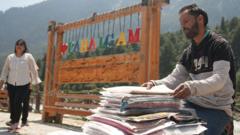
**Resilience Amidst Tragedy: Pahalgam's Tourism Struggles Post-Attack**
After a tragic militant attack, Pahalgam gradually reopens to hesitant tourists, highlighting the region's complex socio-political landscape.
The once-bustling high street of Pahalgam, often referred to as the ‘Switzerland of India’, experienced a stiff decline in tourism activity following the incident. Shops and hotels emptied as travelers fled the area, but now, small numbers of tourists are beginning to return. According to eyewitnesses, despite the fear generated by the attack, some visitors are undeterred, citing the high cost of immediate return flights as a reason to stay.
The government’s response to the attack has involved heightened security measures, including comprehensive searches and the temporary closure of various tourist sites. These actions come against a backdrop of escalating tensions between India and Pakistan, both of which claim Kashmir. This environment of unrest has instilled further apprehension among potential visitors, with local business owners particularly worried about the long-term economic impacts on tourism.
Tour guides and local residents are making concerted efforts to encourage tourists to visit, stressing both the revitalization of the local economy and the hospitality of citizens. Bollywood actor Atul Kulkarni’s recent visit to Pahalgam emphasized the unity against terrorism, urging tourists to abandon cancellations and support the region through continued patronage.
However, the immediate future remains uncertain. High cancellation rates for bookings from major Indian cities indicate a widespread fear among travelers. A tour operator noted that 80-90% of planned trips have been called off, as worries about possible escalation of violence loom large. The ongoing combing operations by Indian authorities, which involve detaining those suspected of militant affiliations, signal a deeper security concern that could deter future visitors.
Attempts to stabilize tourism come as the region struggles to rebuild trust and reassurance in the safety of Pahalgam, which had previously seen a boom in tourist activity—over 23 million visitors in recent years prior to the attack—a stark contrast to the current desolation. As local leaders echo calls for healing and understanding, the path to restoring tranquility and economic stability appears fraught with challenges, leaving many to contemplate the true resilience of this beautiful valley.
The government’s response to the attack has involved heightened security measures, including comprehensive searches and the temporary closure of various tourist sites. These actions come against a backdrop of escalating tensions between India and Pakistan, both of which claim Kashmir. This environment of unrest has instilled further apprehension among potential visitors, with local business owners particularly worried about the long-term economic impacts on tourism.
Tour guides and local residents are making concerted efforts to encourage tourists to visit, stressing both the revitalization of the local economy and the hospitality of citizens. Bollywood actor Atul Kulkarni’s recent visit to Pahalgam emphasized the unity against terrorism, urging tourists to abandon cancellations and support the region through continued patronage.
However, the immediate future remains uncertain. High cancellation rates for bookings from major Indian cities indicate a widespread fear among travelers. A tour operator noted that 80-90% of planned trips have been called off, as worries about possible escalation of violence loom large. The ongoing combing operations by Indian authorities, which involve detaining those suspected of militant affiliations, signal a deeper security concern that could deter future visitors.
Attempts to stabilize tourism come as the region struggles to rebuild trust and reassurance in the safety of Pahalgam, which had previously seen a boom in tourist activity—over 23 million visitors in recent years prior to the attack—a stark contrast to the current desolation. As local leaders echo calls for healing and understanding, the path to restoring tranquility and economic stability appears fraught with challenges, leaving many to contemplate the true resilience of this beautiful valley.

